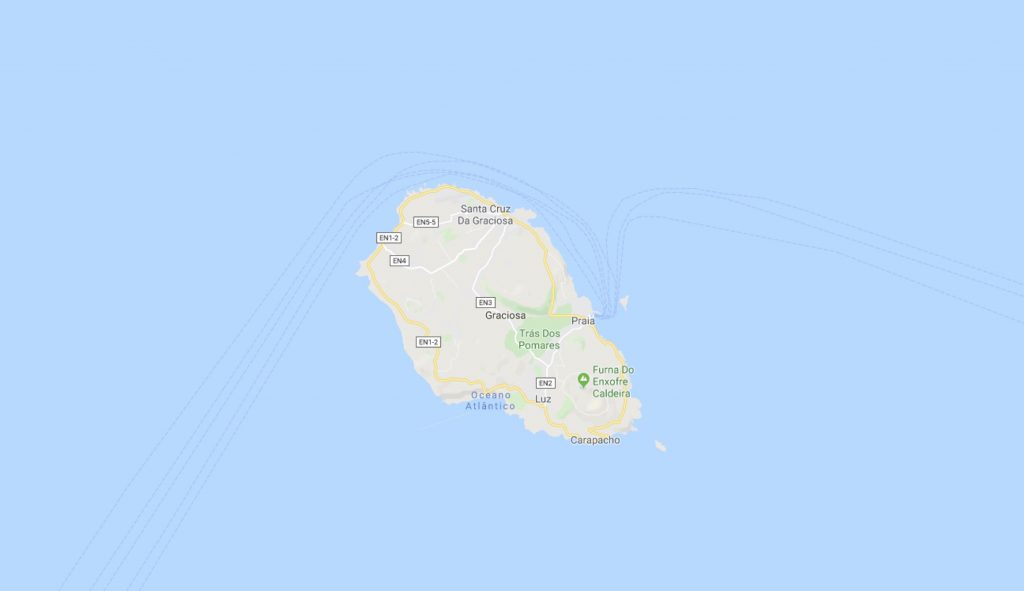
GEOGRAPHY
With 12.5 kilometers in length and 7 km in maximum width, Graciosa Island has an elongated shape that extends from the north-west to the south-east. The 4,391 inhabitants (data from 2011) are distributed over the 60.66 km2 of surface.
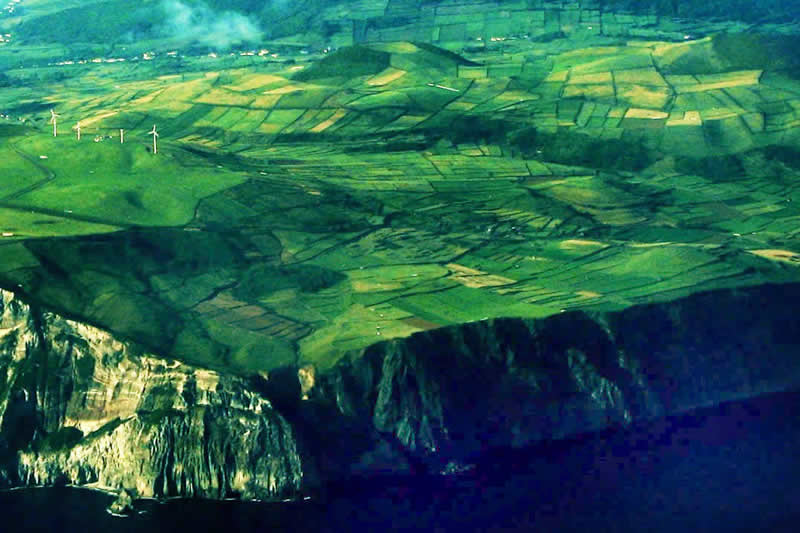
It is the northernmost island among the five of the Central Group of the archipelago; among them, the one that is closest to it is São Jorge, 37 km away. Its highest point (405 m) is located in Caldeira, at 39 ° 01’17 ” north latitude and 27 ° 57’59 ” west longitude.
HISTORY
The year of the Portuguese discovery of Graciosa Island is uncertain. It is believed that it was identified in 1427, as the remaining islands of the Central Group of the Azores Islands, and that in the decade of 1430 it was left on the island of livestock, obeying the order given by the Portuguese crown. The official and continued population must have started around 1470, probably starting from two different nuclei: one led by Vasco Gil Sodrè, in the Santa Cruz area, and the other by Duarte Barreto, in the Praia area.
In 1485, Pedro Correia da Cunha is indicated as captain of the whole island: he stimulated the arrival of new colonists from mainland Portugal and Flanders. From south to north, the fertile plains were consecutively occupied. This population growth first favored the town of Santa Cruz, which was named a town in 1486, before Praia, also known as São Mateus, which only became so in 1546. The local economy was based on agriculture. Wheat and barley (this exceptional case in the whole archipelago) were the main products during the 16th century. In addition to the collection of the Roccella tintoria, it was the vitiviniculture that took on a growing protagonist: the local brandy and wine began to be appreciated and consumed even outside the island. Trade relations developed from Terceira, which owned the most important port of the archipelago. And exactly as happened to the latter, Graciosa was also attacked and sacked by pirates during the 16th and 17th centuries.
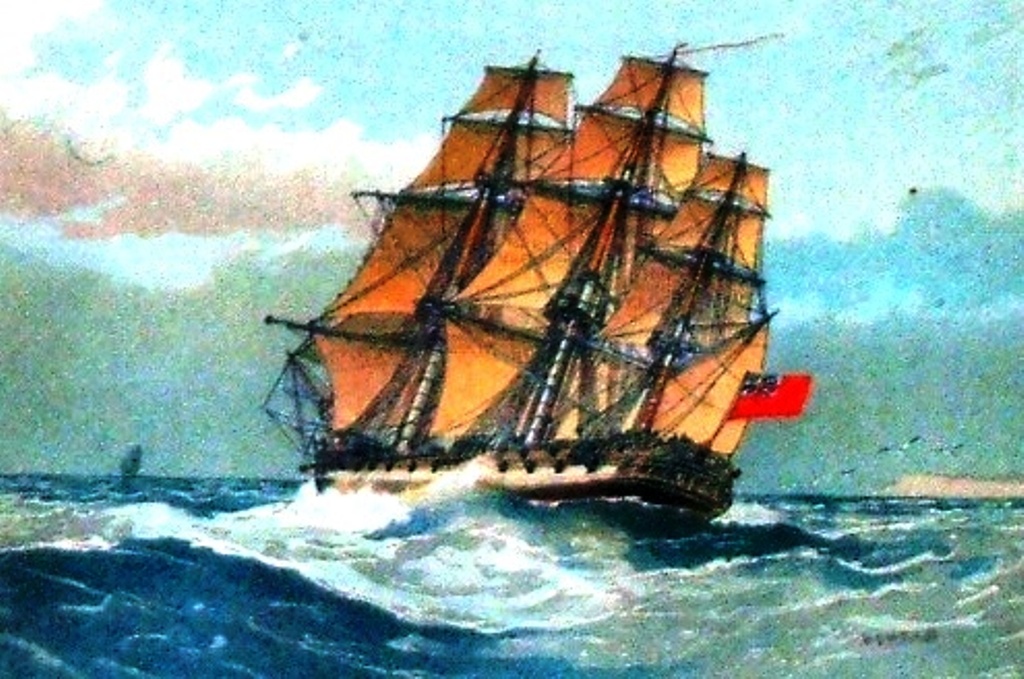
Periods of drought and natural disasters were incisive and constant episodes in the history of Graciosa, ending up causing a generalized impoverishment. As on other islands, wine production suffered a notable decline during the nineteenth century, as a consequence of the occurrence of oidium and phylloxera, diseases of the vines that affected most of the harvests. Between 1950 and 1970 a flow of emigration to the United States made the island’s socio-economic landscape even more barren. A cooperative union movement intending to recover part of the tradition and wine culture culminated, in 1994, in the birth of the ‘Graciosa’ Designation of Origin. Currently, the production of dairy and meat is central to the island’s economic activity. The land, divided into many small properties, is also occupied by the cultivation of corn, vegetables and fruit trees.
In the 1980s, the construction of the aerodrome and the commercial port of Praia opened up new prospects for the future: and Graciosa was also on the path of sustainable tourism.
NATURE
Graciosa, recognized by UNESCO as a Biosphere Reserve, is the second smallest island in the archipelago, and it is also the one with the least imposing reliefs, with numerous flat areas and gentle hills.Pedras Brancas (‘white stones’), Serra Branca (‘white mountain’) or Barro Branco (‘white clay’) are toponyms that derive from the presence of a volcanic rock, trachyte, which is quite common on the island.
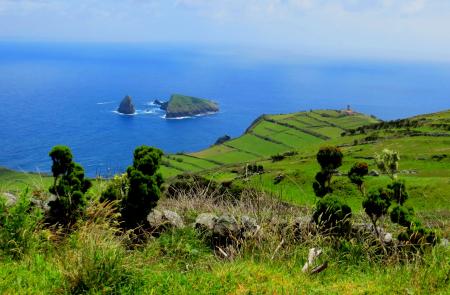
When this, with the passage of time, undergoes a certain alteration, it takes on a whitish color which explains the name of “White Island”.The houses of the four inhabited localities of the only municipality of the island, distributed both on the coast and inside, produce a sui generis occupation of the island territory, and have a strong impact on the landscape, which is thus humanized.
VOLCANIC LANDSCAPES
Caldeira da Graciosa is the most emblematic landscape element of the island, and corresponds to an elliptical collapse depression, with diameters of 1.6 and 0.8 kilometers, and about 270 meters deep. This depression is located on top of the Caldeira volcano, the smallest central volcanic building in the Azores. The climb up to Furna from Maria Encantada, or the entrance into the crater through the access tunnel, allows you to admire all the depression, and the abundant and luxuriant vegetation planted by man: cryptomeries, acacias, pines and pitosfori cover the almost all of the crater walls, contrasting with the vegetation of other areas of the island.Inside the Caldeira there is an imposing volcanic cavity, the Furna do Enxofre (‘sulfur cave’). Communicating with the outside through two large slits, the Furna do Enxofre is a perfect vaulted cavity, 40 meters high in its central part. It is accessed by entering a tower built in the early twentieth century, and going down a spiral staircase consisting of 183 steps. The “cathedral” of the Azores volcanic cavities contains a lake of cold water and a muddy fumarole from which emanates the sulfur smell that gave it its name, and which recalls its volcanic origin.In turn, the Caldeirinha de Pêro Botelho corresponds to the only well cave on the island, with a depth of approximately 37 m. First explored in 1964 by the “Os Montanheiros” Association, this deep cavity allows you to relive JulesVerne’s journey into the bowels of the Earth, but it is recommended only for caving practitioners with extensive experience and the necessary equipment.Pico Timão is one of the largest cinder cones of Graciosa and, together with Ponta Lagoa – Arrochela, is the product of the last volcanic eruption, which occurred on the island about 2,000 years ago.
COAST
The rocky and jagged coast of the island is generous in unique landscapes. The high and steep cliffs of Serra Branca and Ponta da Restinga contrast with the low coast of the coves of Vitória, Folga, Barra or Porto Afonso, and deserve special attention. The islet of Praia, in front of the only beach of the island, stands out on the blue of the sea with the green of the vegetation that covers it: it is a Special Protection Area, since it meets on the bird-of-the-sea route storms-of-Monteiro (Oceanodroma monteiroi), the only endemic seabird in the Azores.
Of all the lighthouses in the Azores, that of Ponta da Barca is the highest, and offers an incredible panorama of the ocean and a rocky islet sculpted by the force of the sea. The sunset light reinforces the surreal physiognomy of Ilhéu da Baleia (‘Whale Islet’), symbol of the island of Graciosa and of an entire archipelago transformed into a cetacean sanctuary.
ATTRACTIONS
Considered an extraordinary place for diving and fishing, Graciosa is an invitation to explore the coast by kayak or by boat. The bays of Santa Cruz, Folga and Praia are excellent for oars, sailing or windsurfing. Carapacho, Praia, Barro Vermelho and Calheta are just as many invitations to nice sun and sea baths.
In Carapacho, the presence of thermal waters around 40 ° C allows relaxing and therapeutic baths in waters whose beneficial properties are well known. A modern spa facility offers visitors a great variety of techniques and values, in a welcoming and idyllic natural environment, overlooking the ocean and the islet called Ilhèu de Baixo. In the same resort, in the recently renovated natural pools, you can enjoy a bath in sea water heated by thermal water, thus undergoing a relaxing and exotic natural thalassotherapy.
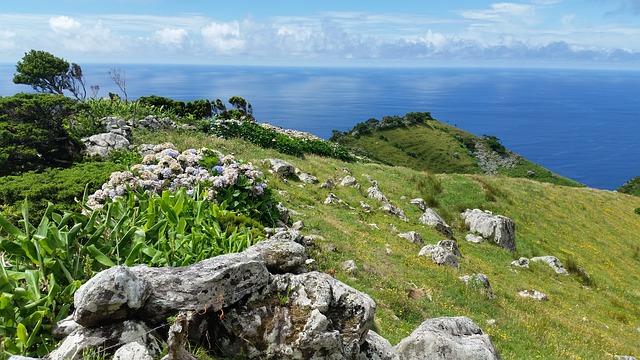
Among the various trekking routes on the island, the road that surrounds Caldeira is worth mentioning, which can also be traveled by bicycle, BTT, horseback or by car. Whatever the choice, breathtaking landscapes are guaranteed, both from the cliffs and from the white houses surrounded by green fields.
The obligatory visit of the Furna do Enxofre, ex-libris of the island, can be enriched, with the help of a guide, by the exploration of other volcanic caves: discover the secrets of Furna d’Agua, Furna do Abel or della Furna da Maria Encantada will be an unforgettable experience.
HERITAGE AND CULTURE, ARCHITECTURE
The nature and human elements that make up the Graciosa landscape seem to have discovered the laws of harmonious coexistence. From the top of the viewpoint of Monte de Nossa Senhora da Ajuda, near a simple chapel, you can see the white buildings of the town of Santa Cruz, and next to them the windmills and the grid of walls that delimit the vineyards.
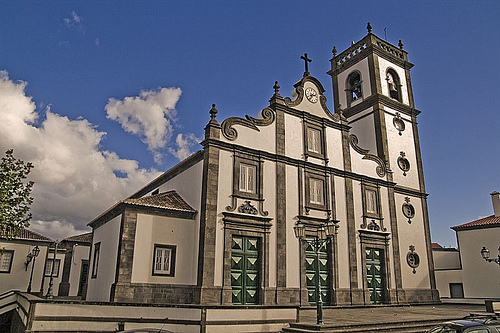
Santa Cruz is notable for its typical houses and cobblestone-covered alleys, which branch off from the large central square, where the typical coreto (a gazebo built for musical purposes), brackish and araucaria water pools are located. The main church dates back to the 16th century, but a later reconstruction endowed it with Baroque elements. The architectural heritage of the island is well preserved in various types of buildings, and especially in churches, chapels, peasant houses and windmills, and in a curious “hydraulic architecture” associated with a centenary network of cisterns and refueling systems ‘drinking water. Guadalupe, Luz and Vitoria are all places to visit with senses open to experience: in Praia, lace curtains peek out from behind the glass, fishing boats cheer up the port with their colors and the inhabitants politely greet visitors. The rebuilt mills catch the eye, with the vivid colors of their doors and windows. Inside there are holiday homes, a paradigmatic example of tourism that knows how to respect the legacy received.
CULTURE
The Graciosa Museum is made up of six exhibition areas, and presents an important collection of local ethnography. It illustrates traditional activities such as agriculture, viticulture, cereal production, whaling and other ancient trades, exhibiting equipment, tools and historical documents. The central core consists of the interior of a typical house in Graciosa, with furniture and decorative objects. Collections of coins, postcards, newspapers and photographs complete the museum complex.
CRAFTS
The threshing tradition is still kept alive by the rare burras de milho (‘corn donkeys’, wooden structures where cobs are hung), which can be seen on the sides of the streets. In Limeira there is still someone who puts the cobs to dry in the characteristic triangular barns with four pilari; once the beans are ground, the corn bread is cooked and eaten at home.
The Association of Craftsmen of Graciosa Island, in Santa Cruz, opens its doors to show the methods used in the embroidery on linen, made with a very ancient and peculiar point of the island.
FESTIVITY
Graciosa has its own festive dimension which is expressed in the popular dances, in the concerts of the philharmonic, in the feasts of the patron saints of the various locations and in the famous Carnival dances. Traditional dances and melodies are still alive thanks to a passion for music which, shared by the whole population, is revealed at any time of the year and is supported by the island’s Music Academy. During the week of Carnival, the various collectivities organize parades whose participants dance wearing original masks and costumes.
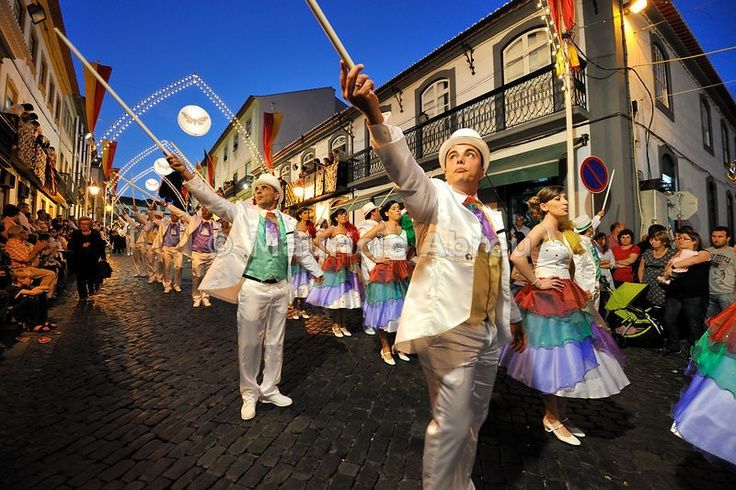
The festival of Senhor Santo Cristo dos Milagres, in August, associates other types of events with the religious component: musical performances and folkloric groups animate the historic streets of Santa Cruz. As in the rest of the archipelago, the Festivities of the Holy Spirit have deep roots in the culture of the island, and run from May to September.
GASTRONOMY
The fresh fish of the generous Azorean sea is traditionally served in a pot or roasted. Garlic and Graciosa melon have obtained a status of gourmet products, and are the ingredients of choice in various recipes.But, if there is a truly characteristic product, they are the sweets that spread the name of the island everywhere: the queijadas da Graciosa, inspired by the centenary recipe of the covilhetes de leite, a kind of tartelette. The local pastry, varied and delicious, also includes cavacas, escomilhas, capuchas, pastéis de arroz or encharcadas de ovos.
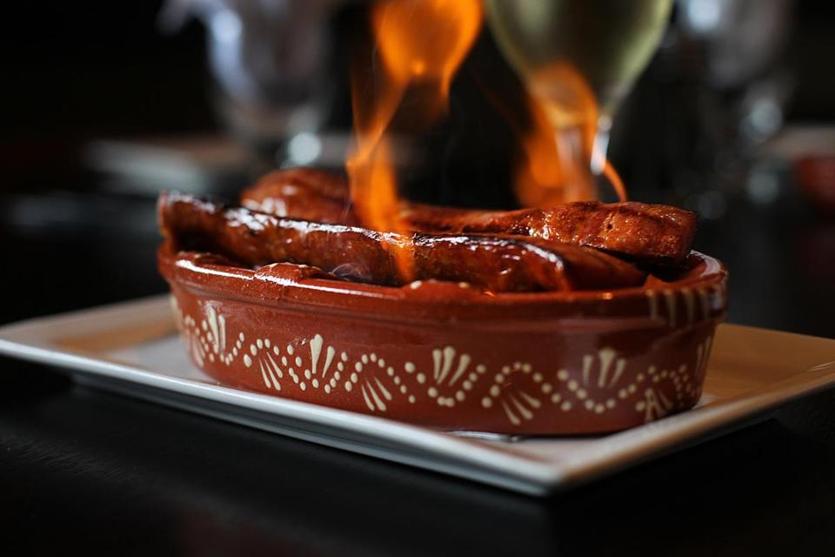
Graciosa wine, coming from the original verdelho caste, has resisted the devastation of phylloxera. Currently, and with the introduction of other castes, the whites produced in the region, with the origin mark, are excellent accompaniments to regional gastronomy. The brandy and aperitif wines complete the abundant offer of local drinks.








